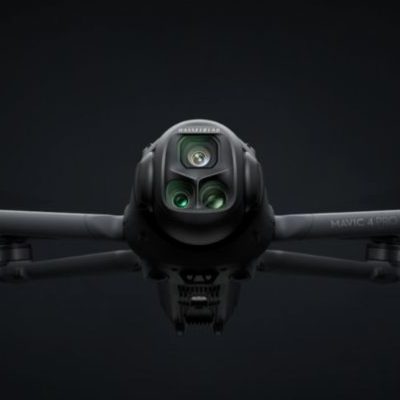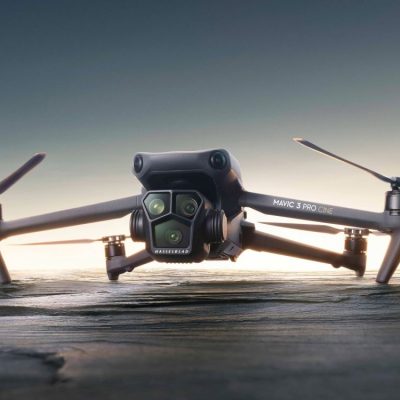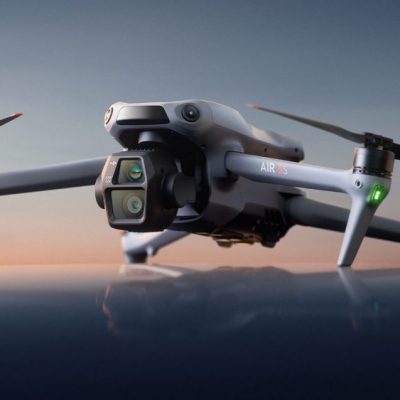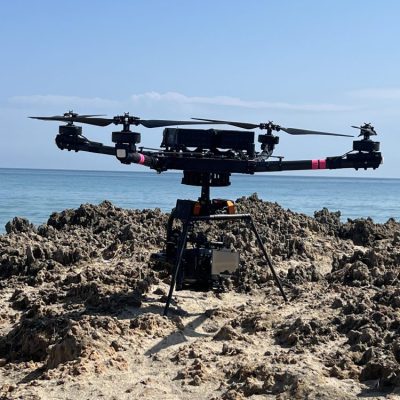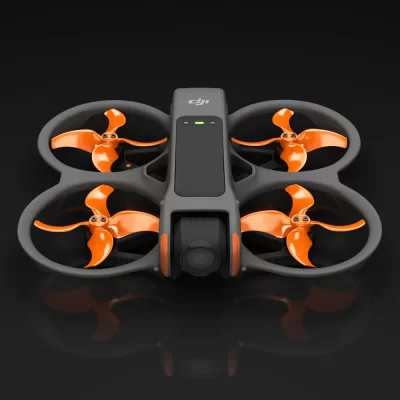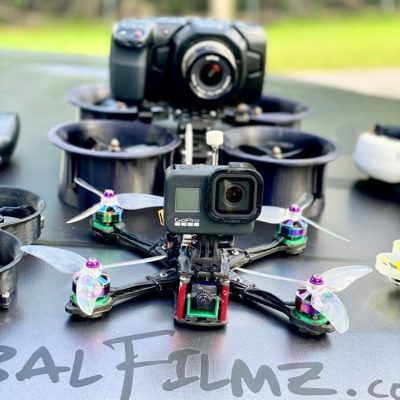In the world of photography and videography, capturing stunning images and captivating videos has always been a goal. With advancements in technology, aerial photography and drone video production services have skyrocketed in popularity. These services provide a fresh perspective, allowing us to see the world from new heights. In this blog, we will explore the fascinating world of aerial photography and drone video production, uncovering their benefits and how they have revolutionized various industries.
1. The Rise of Aerial Photography:
Aerial photography, traditionally captured from helicopters or airplanes, has long been used for mapping, surveillance, and military purposes. However, with the introduction of drones, aerial photography became more accessible and affordable for commercial and personal use. Drones equipped with high-resolution cameras and stabilizing gimbals allow photographers to capture breathtaking aerial shots effortlessly.
2. Advantages of Aerial Photography:
Aerial photography provides unique advantages that cannot be achieved through traditional methods. It offers a bird’s-eye view, showcasing landscapes, buildings, and events from a whole new perspective. Whether it’s capturing real estate properties, landscapes, or special occasions like weddings, aerial photography adds an extraordinary touch to any project. It allows for comprehensive coverage, highlighting details that may otherwise go unnoticed.
3. Applications of Aerial Photography:
Aerial photography has found its place in numerous industries. In real estate, aerial shots can emphasize property features, showcase surrounding amenities, and provide potential buyers with a comprehensive view of a property. Construction companies use aerial photography to monitor project progress, identify potential issues, and create accurate site surveys. Aerial photography is also utilized in tourism, environmental studies, and event coverage, among many other fields.
4. Drone Video Production:
Drone video production takes aerial photography to the next level by capturing captivating videos from the sky. With the ability to record high-quality footage in various resolutions, drones have become an essential tool for filmmakers, videographers, and content creators. The smooth and dynamic aerial shots obtained through drone video production add a cinematic feel to any project.
5. Benefits of Drone Video Production:
Drone video production offers several advantages, enhancing storytelling and visual impact. It allows for smooth tracking shots, soaring over landscapes, and capturing dynamic movements impossible to achieve with traditional camera setups. In filmmaking, drones can replace costly and time-consuming crane shots or helicopter rentals, resulting in significant cost savings. Additionally, drone videos create a sense of awe and immersion, engaging viewers in a unique way.
6. Industries Harnessing Drone Video Production:
Drone video production has revolutionized various industries. In the film and entertainment sector, drones bring cinematic quality to productions, enabling breathtaking action sequences and establishing shots. Event organizers use drone videos to capture the grandeur of concerts, festivals, and sporting events, providing attendees with memorable experiences. Industrial inspections, aerial surveillance, and search and rescue missions are further examples of how drone video production is transforming safety protocols and operational efficiency.
Aerial photography and drone video production services have opened up a world of creative possibilities. From capturing stunning vistas to revolutionizing industries, these services have become invaluable tools for photographers, filmmakers, and businesses alike. With their ability to provide unique perspectives and engaging visuals, aerial photography and drone videos continue to redefine the boundaries of imagination. So, next time you want to capture the world from new heights, consider the thrilling options offered by aerial photography and drone video production services.
Q: What is aerial photography?
A: In recent years, aerial drone photography has taken the world by storm, captivating audiences with its stunning and unique perspectives. Drone photography allows us to capture awe-inspiring images from the sky, offering a fresh and exciting way to see the world.
1. Definition and Methodology:
Aerial drone photography involves the use of unmanned aerial vehicles (UAVs), commonly known as drones, to capture images from an elevated vantage point. These drones are equipped with high-resolution cameras that capture breathtaking aerial shots. The versatility and maneuverability of drones allow photographers to explore landscapes, architecture, events, and various subjects from angles that were once impossible or expensive to achieve.
2. Benefits and Advantages:
Aerial drone photography offers numerous benefits over traditional aerial photography methods. Firstly, drones are relatively more affordable and accessible, opening up aerial photography to a wider range of enthusiasts and professionals. Drones are also more agile and can reach remote or congested areas with ease, providing a unique perspective that was previously challenging to achieve. Additionally, drones can be controlled remotely, allowing photographers to capture images from safe distances, reducing risk and enhancing safety.
3. Equipment Used:
The primary equipment used in aerial drone photography is the drone itself, which is equipped with a high-quality camera. Drones designed for photography purposes often feature stabilized gimbals to ensure smooth footage and sharp images. These drones may also include GPS systems, obstacle avoidance sensors, and advanced flight modes to enhance control and safety. Furthermore, photographers may utilize additional accessories such as filters, extra batteries, and memory cards to optimize their aerial photography experience.
4. Applications and Impact:
Aerial drone photography has made a significant impact across various industries. In real estate, drone photography helps capture stunning aerial views of properties, allowing potential buyers to get a comprehensive understanding of the property’s location and surroundings. In the field of filmmaking and videography, drones provide filmmakers with the ability to capture cinematic aerial shots that were once only possible with expensive helicopters or cranes. In agriculture, drones aid in crop monitoring, mapping, and identifying potential issues. Moreover, aerial drone photography finds applications in environmental research, infrastructure inspection, event coverage, and even search and rescue operations.
5. Legal and Ethical Considerations:
As aerial drone photography continues to gain popularity, it is essential to address the legal and ethical considerations associated with its use. Drone operators must comply with local regulations and obtain necessary permits or licenses to ensure safe and responsible operation. Furthermore, privacy concerns should be respected, and drone pilots must always prioritize the safety of people and property while capturing images.
Aerial drone photography has revolutionized the art of photography, providing a fresh perspective from above. With their agility, affordability, and advanced capabilities, drones have made aerial photography accessible to a broader audience. From real estate to filmmaking, agriculture to environmental research, aerial drone photography has made a significant impact across various industries. While enjoying the breathtaking images captured by drones, it is crucial to operate within legal boundaries and prioritize safety and ethical considerations. As technology continues to advance, aerial drone photography will undoubtedly continue to push the boundaries of creativity, expanding our horizons and presenting the world in extraordinary ways.
Q: What are the advantages of aerial photography?
A: Aerial photography offers several advantages. It provides a fresh perspective, showcasing details that may go unnoticed from the ground. It is ideal for real estate, construction monitoring, tourism, and event coverage, among other applications. Aerial photography has become increasingly popular in recent years, offering a unique and captivating perspective of the world from above. In this article, we will explore the advantages of aerial photography, highlighting how it has revolutionized various industries and enriched our visual experiences.
1. Unique Perspective and Stunning Images:
One of the most evident advantages of aerial photography is the ability to capture images from a high vantage point. By taking to the skies, photographers can unveil breathtaking landscapes, architectural marvels, and natural wonders that may be hidden or difficult to appreciate from the ground. Aerial photography allows us to see familiar places from a fresh perspective, revealing patterns, shapes, and details that are otherwise unnoticed.
2. Enhanced Context and Spatial Awareness:
Aerial photography provides a broader context and a better understanding of the environment. By capturing images from above, we can visualize how various elements interact and relate to each other. This can be particularly useful in urban planning, architecture, and real estate, allowing professionals to assess the layout, proximity, and overall design of a location. Aerial photography also aids in navigation, mapping, and surveying, providing accurate and up-to-date visual data for analysis.
3. Cost-Effective and Efficient:
Traditionally, capturing aerial photographs required expensive equipment, such as helicopters or airplanes. However, with the advent of drones, aerial photography has become more accessible and cost-effective. Drones are relatively affordable compared to traditional methods and offer greater flexibility. They can navigate complex terrains, reach remote areas, and capture images with precision. As a result, aerial photography has become a viable option for enthusiasts, professionals, and various industries, reducing costs and saving time.
4. Safety and Reduced Risks:
Aerial photography with drones offers a safer alternative to manned flights. Piloting drones remotely eliminates the need for photographers to be physically present on board aircraft, reducing risks associated with human error and adverse weather conditions. Drones equipped with obstacle avoidance sensors and flight stabilization systems further enhance safety by minimizing collisions and ensuring a stable aerial platform for capturing images. This advantage is particularly crucial in challenging environments, disaster response, and search and rescue operations.
5. Versatility and Flexibility:
Aerial photography allows for versatility and flexibility in capturing images from various angles and altitudes. Drones equipped with high-resolution cameras and stabilized gimbals can capture stunning visuals, whether it’s aerial panoramas, detailed close-ups, or smooth cinematic shots. With advanced flight modes and programmable routes, photographers can precisely control the drone’s movements, enabling the capture of dynamic and creative aerial footage that was once only possible with expensive equipment or manned flights.
6. Applications across Industries:
Aerial photography finds applications in a wide range of industries. In real estate, aerial images provide a comprehensive view of properties, showcasing their location, size, and surroundings. Construction and architecture benefit from aerial photography by monitoring progress, inspecting structures, and visualizing projects in their entirety. Aerial photography also aids in environmental monitoring, land management, agriculture, tourism promotion, and event coverage. In the film industry, aerial shots bring a cinematic touch, creating visually stunning scenes and enhancing storytelling.
The advantages of aerial photography are abundant and far-reaching. It offers an unparalleled perspective, capturing stunning images that unveil hidden beauty and provide a comprehensive understanding of our surroundings. Aerial photography is cost-effective, efficient, and safe, thanks to advancements in drone technology. Its versatility and flexibility make it valuable across various industries, enabling professionals to make informed decisions and create captivating visuals. As aerial photography continues to evolve, it will undoubtedly continue to shape our perception of the world, offering unique and inspiring experiences for photographers and viewers alike.
Q: What is drone video production?
A: Drone video production involves capturing high-quality videos using drones equipped with cameras and stabilizing gimbals. Drones offer smooth tracking shots, dynamic movements, and the ability to capture footage from unique angles, adding a cinematic touch to videos. Drone video production has revolutionized the world of filmmaking, offering filmmakers and content creators a unique and captivating way to capture breathtaking aerial footage.
1. Definition and Equipment:
Drone video production involves capturing video footage using unmanned aerial vehicles (UAVs) equipped with cameras. These drones, also known as aerial platforms, are typically equipped with stabilized gimbals to ensure smooth and steady shots. Depending on the requirements, drones can be equipped with various camera types, including high-definition cameras, 360-degree cameras, or even specialized cameras for thermal imaging or night vision.
2. Aerial Perspective and Cinematic Shots:
One of the primary advantages of drone video production is the ability to capture stunning aerial perspectives. Drones provide a bird’s-eye view, allowing filmmakers to showcase landscapes, architecture, and natural wonders from unique angles and heights. This perspective adds a cinematic touch to the footage, creating a sense of awe and immersiveness for viewers. Whether it’s sweeping panoramic shots, dramatic flyovers, or dynamic tracking shots, drone video production offers endless creative possibilities.
3. Versatility and Flexibility:
Drones offer unparalleled versatility and flexibility in capturing video footage. They can easily maneuver through tight spaces, navigate complex terrains, and reach areas that would be challenging or impossible for traditional camera setups. This versatility allows filmmakers to capture shots that were once only achievable with expensive equipment or manned flights. From capturing action sequences in films to documenting outdoor adventures or even covering live events, drone video production opens up a world of creative possibilities.
4. Enhanced Storytelling:
Drone video production enhances storytelling by providing a visual narrative that complements the overall story. Aerial shots can establish the setting, provide context, and highlight key elements of the narrative. By seamlessly integrating aerial footage with ground-level shots, filmmakers can create a more immersive and engaging experience for the audience. This visual contrast between the vastness of the sky and the intimacy of close-ups can evoke emotions, enhance suspense, and add a new dimension to storytelling.
5. Technical Advancements and Intelligent Flight Modes:
The advancements in drone technology have significantly improved the capabilities of drone video production. Modern drones are equipped with intelligent flight modes, such as follow-me, orbit, and waypoint navigation. These features allow filmmakers to program complex flight paths and capture smooth, automated shots. Additionally, obstacle avoidance sensors and advanced stabilization systems ensure a safe and stable flight, enabling filmmakers to focus on capturing the perfect shot without worrying about technical challenges.
6. Wide Range of Applications:
Drone video production finds applications in various fields beyond filmmaking. It is widely used in real estate to showcase properties and their surroundings. In tourism, drone footage provides captivating visuals to promote destinations and attractions. News organizations utilize drones for aerial reporting, capturing events, and documenting news stories from a unique perspective. Additionally, drone video production is utilized in sports, documentaries, music videos, and advertising, adding a dynamic and visually appealing element to the content.
Drone video production has transformed the way we capture and experience visual content. With its ability to capture breathtaking aerial perspectives, enhance storytelling, and offer versatility in filming, drones have become essential tools for filmmakers and content creators. As technology continues to advance, the possibilities for drone video production are limitless. By embracing this innovative form of filmmaking, creators can unlock new creative horizons and deliver visually stunning and immersive experiences for their audiences.
Q: What are the benefits of drone video production?
A: Drone video production offers numerous benefits. It provides smooth and dynamic aerial shots that engage viewers and create a sense of awe. Drones are cost-effective alternatives to traditional camera setups, allowing for impressive aerial footage without the need for cranes or helicopters. In recent years, drone video production has gained immense popularity across various industries, offering a multitude of benefits that were once unattainable.
1. Aerial Perspectives and Captivating Footage:
One of the most significant benefits of drone video production is the ability to capture breathtaking aerial perspectives. Drones provide a unique vantage point, allowing filmmakers to showcase landscapes, architecture, and events from impressive heights and angles. This aerial footage adds a cinematic touch to videos, immersing viewers in a visually stunning and captivating experience. Whether it’s showcasing real estate properties, documenting outdoor adventures, or capturing scenic beauty, drones elevate the quality and impact of the footage.
2. Cost-Effective Alternative to Traditional Methods:
Traditionally, capturing aerial shots required expensive equipment like helicopters or cranes, making it an inaccessible option for many filmmakers. Drone video production offers a cost-effective alternative, eliminating the need for such resources. Drones are relatively affordable, easy to operate, and require minimal crew members. This cost-effective approach allows filmmakers to achieve professional-grade aerial shots without breaking the bank, making it an attractive option for projects with limited budgets.
3. Enhanced Safety and Accessibility:
Drones provide a safe and accessible means of capturing footage in challenging or hazardous environments. They can easily maneuver through tight spaces, navigate complex terrains, and reach areas that would be otherwise difficult or dangerous for humans. From capturing shots in inaccessible natural landscapes to documenting construction sites or disaster-stricken areas, drones ensure the safety of crew members while providing valuable visual documentation.
4. Flexibility and Versatility:
Drone video production offers unparalleled flexibility and versatility. Drones can be equipped with various cameras, including high-definition cameras, 360-degree cameras, or specialized cameras for thermal imaging or night vision. This versatility allows filmmakers to adapt to different shooting scenarios and capture footage with various creative intents. Drones can fly at different speeds, change altitudes, and maneuver in different directions, enabling filmmakers to achieve dynamic and engaging shots that were once only possible with complex camera setups.
5. Time Efficiency and Quick Deployment:
The swift deployment and maneuverability of drones significantly reduce the time required to capture footage. Traditional methods often involve extensive pre-production planning and setup, such as renting equipment, securing permits, and coordinating with pilots. With drones, filmmakers can quickly set up and start filming, saving valuable time and ensuring efficient workflow. This time efficiency is particularly advantageous for covering live events, where capturing timely footage is crucial.
6. Improved Storytelling and Engagement:
Drone video production enhances storytelling by adding a visually compelling and immersive element to videos. Aerial shots provide a fresh and unique perspective, allowing filmmakers to establish the setting, highlight key elements, and create a sense of scale and grandeur. This visual contrast between aerial and ground-level shots adds depth to storytelling, evokes emotions, and engages the audience on a deeper level. The captivating nature of drone footage keeps viewers engaged, making it a powerful tool for conveying messages and leaving a lasting impression.
Drone video production has revolutionized the world of visual content creation, offering numerous benefits that enhance creativity, efficiency, and storytelling. From capturing awe-inspiring aerial perspectives to improving safety and accessibility, drones have opened up new possibilities for filmmakers and content creators. By embracing this innovative technology, creators can elevate the quality of their videos, engage audiences in unique ways, and unlock a world of creative potential. As the technology continues to advance, drone video production will undoubtedly play an increasingly integral role in the world of visual storytelling.
Q: What industries benefit from aerial photography and drone video production?
A: Aerial photography and drone video production have applications in various industries. Real estate, construction, tourism, event management, film and entertainment, industrial inspections, and public safety sectors are just a few examples of industries that utilize these services.
Q: How can aerial photography benefit the real estate industry?
A: Aerial photography can greatly benefit the real estate industry. It allows for comprehensive property coverage, highlighting features, location amenities, and surrounding landscapes. Aerial shots provide potential buyers with a unique perspective, increasing engagement and interest.
Q: Can drone video production be used for event coverage?
A: Absolutely! Drone video production is an excellent choice for event coverage. It can capture the grandeur of concerts, festivals, sporting events, and weddings, providing immersive and memorable videos for attendees and organizers.
Q: What safety considerations should be taken into account when using drones for aerial photography?
A: Safety is paramount when using drones for aerial photography. Operators must follow local regulations and obtain necessary permits or licenses. They should also ensure proper training, maintain a safe distance from people and property, and be aware of airspace restrictions and weather conditions.
Q: What is the future of aerial photography and drone video production?
A: The future of aerial photography and drone video production is incredibly promising. As technology advances, drones are becoming more capable, with improved flight stability, longer battery life, and higher-quality cameras. These services will continue to evolve, pushing the boundaries of creativity and offering even more stunning visual experiences.
Exploring the Wide Range of Aerial Photography Services in Miami
Miami, known for its stunning landscapes, vibrant cityscapes, and breathtaking coastlines, has become a hotbed for aerial photography. From real estate and tourism to film production and advertising, aerial photography services in Miami cater to a diverse range of industries. In this article, we will delve into the various aerial photography services available in Miami, highlighting their benefits, applications, and the companies providing them.
1. Miami’s Real Estate Aerial Photography:
Aerial photography plays a crucial role in the real estate industry. It offers a unique perspective that showcases properties in their entirety, highlighting their features and surroundings. Companies like Miami Aerial provide high-resolution aerial images and videos that capture the essence of properties, allowing potential buyers to make informed decisions.
2. Aerial Photography for Miami’s Tourism and Hospitality:
Miami’s beauty attracts tourists from around the world, and aerial photography helps promote the city’s stunning attractions and luxurious resorts. Aerial shots of Miami Beach, Biscayne Bay, and the city skyline create captivating visuals for tourism campaigns. Companies like Miami SkyCam specialize in providing aerial photography services for the tourism and hospitality industry, allowing businesses to showcase their offerings in the most visually appealing way.
3. Aerial Photography Film Production:
The film industry in Miami thrives on aerial shots, capturing the city’s vibrant culture and picturesque locations. Aerial photography services are utilized to shoot scenes for movies, documentaries, and commercials. Companies such as Miami Drone Pros offer drone-based aerial cinematography, enabling filmmakers to capture dynamic shots that were once only possible with expensive equipment.
4. Aerial Photography for Miami’s Construction and Architecture:
Aerial photography is an invaluable tool in the construction and architecture sectors. It helps architects, engineers, and construction companies gain a comprehensive view of project sites, monitor progress, and document completed work. Aerial imaging companies like Sky High Miami provide detailed aerial surveys, mapping, and progress monitoring services that aid in the planning and execution of construction projects.
5. Aerial Photography for Miami’s Event Coverage:
Aerial photography services play a significant role in covering large-scale events such as concerts, festivals, and sports competitions. Companies like Miami Drone Flights offer drone-based aerial photography and videography that capture the energy and scale of events from unique angles. These captivating aerial shots provide event organizers and participants with memorable visuals.
6. Environmental Monitoring:
Miami’s unique ecosystem and fragile coastline require constant monitoring to ensure its preservation. Aerial photography plays a vital role in environmental monitoring, capturing aerial images that aid in assessing and analyzing changes in vegetation, shorelines, and water bodies. Companies like Miami Aerial Surveys specialize in aerial surveys for environmental studies, aiding scientists, researchers, and conservationists in their efforts to protect Miami’s natural beauty.
7. Aerial Photography for Miami’s Advertising and Marketing Industry:
In the competitive world of advertising and marketing, aerial photography services are used to create visually striking campaigns that stand out from the crowd. From billboards and print ads to digital marketing materials, aerial images and videos capture attention and leave a lasting impression. Companies like Miami Drone Media provide aerial photography services tailored specifically for advertising and marketing purposes.
Aerial photography services in Miami offer a wide range of applications across various industries, including real estate, tourism, film production, construction, event coverage, environmental monitoring, and advertising. The ability to capture unique perspectives and showcase Miami’s beauty from above has revolutionized these industries, providing valuable tools for promotion, documentation, and analysis. As technology advances, aerial photography services continue to evolve, offering innovative solutions and pushing the boundaries of creativity. With numerous companies specializing in aerial photography in Miami, businesses and individuals can easily find the right service provider to meet their specific needs and capture the magic of Miami from the sky.
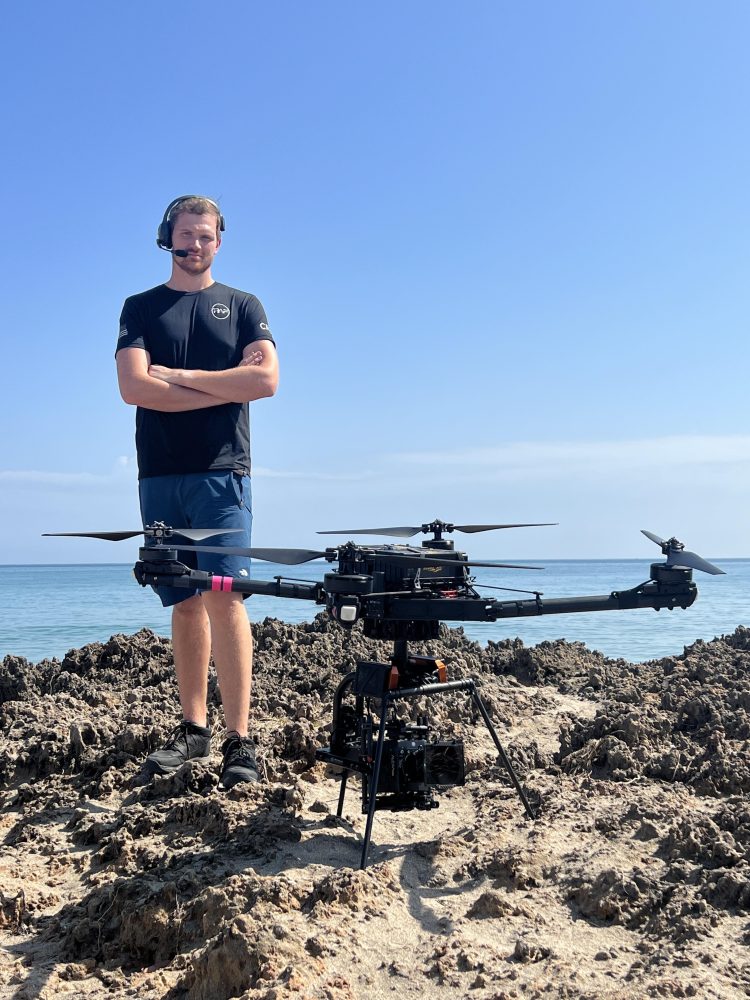 Marcus M. is a highly skilled and award-winning cinema drone pilot based in Miami. With an exceptional expertise in flying heavy lifter drone rigs, Marcus is renowned for his ability to handle advanced camera systems such as ARRI Alexa Minis and RED Digital Cinema cameras. His precision and finesse in aerial cinematography have earned him numerous accolades in the industry. Marcus’s passion for capturing breathtaking shots from unique perspectives has made him a sought-after professional in the field. With his technical mastery and artistic vision, Marcus continues to push the boundaries of aerial cinematography, delivering stunning visuals that captivate audiences.
Marcus M. is a highly skilled and award-winning cinema drone pilot based in Miami. With an exceptional expertise in flying heavy lifter drone rigs, Marcus is renowned for his ability to handle advanced camera systems such as ARRI Alexa Minis and RED Digital Cinema cameras. His precision and finesse in aerial cinematography have earned him numerous accolades in the industry. Marcus’s passion for capturing breathtaking shots from unique perspectives has made him a sought-after professional in the field. With his technical mastery and artistic vision, Marcus continues to push the boundaries of aerial cinematography, delivering stunning visuals that captivate audiences.



